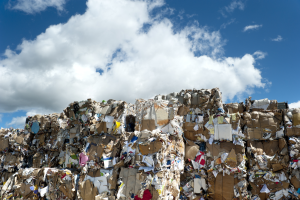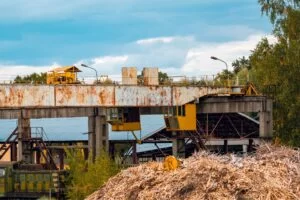The UK Government announced on Tuesday 17 August the launch of a strategy to meet its goals of 5 gigawatts (GW) of low-carbon hydrogen production by 2030 to replace the natural gas that powers three million Uk homes, as well as industry and transport.
Bioenergy News reports that industry and policy-makers are looking more and more to hydrogen to lower the environmental impact of sectors that have been the hardest to decarbonise and reduce reliance on natural gas, but the technical challenges and the investment needed are high.
Nearly all of the hydrogen produced in Britain so far is based on fossil fuel energy.
The government’s strategy is to replace up to one-fifth of natural gas supplies with ‘green’ hydrogen, which is made through electrolysis powered by renewable energy to split water into hydrogen and oxygen.
‘Blue’ hydrogen would also be used, but unlike green hydrogen, it is not emissions-free, although the carbon emissions are captured and stored and then used in other applications.
The government said around £900 million of funding will be available to support hydrogen projects in the UK, which it said could create more than 9,000 jobs by 2030.
The government has alas launched a consultation, as part of the strategy, on the types of support for hydrogen projects that would lower costs, along the lines of its contracts-for-difference (CfD) scheme that incentivises investment in renewable energy, by guaranteeing a minimum price for those who produce it.
The government will also work with industry on the feasibility of mixing 20 per cent hydrogen into the existing gas supply and will consult on the design of a £240 million net-zero hydrogen fund to support the development of low carbon hydrogen plants.
British multinational chemicals company INEOS, Europe’s largest producer of hydrogen, said it saw a hydrogen economy as the country’s best chance of meeting carbon reduction targets.
INEOS Corporate Affairs Director Tom Crotty said: “The government must start to commit to investment in the development of the UK’s hydrogen infrastructure.
“At the moment, we are massively lagging behind Europe and words are not enough.”
The UK produces approximately 27 terawatt-hours (TWh) of hydrogen a year, and mostly from fossil fuels.
According to the UK government’s climate change adviser to the Committee on Climate Change, to meet the government’s net-zero emissions goal by 2050 would require 270 TWh of hydrogen, mostly blue.
Over a year, 1 GW equates to 8.76 TWh of energy.
However, some environmental groups claim the inclusion of blue hydrogen in the UK strategy could keep the country locked into fossil fuels.
They also criticise the carbon capture and storage technology, which has yet to be rolled out at a commercial scale and is needed to contain the emissions from blue hydrogen.
Research last week by US universities Cornell and Stanford said that blue hydrogen could be 20 per cent worse for the environment than using gas in homes and industry because of the carbon dioxide and methane emissions that can escape during production.
If you’re looking for industrial conveyor belt cleaners for your biofuel concerns, get in touch today.
9, a:1:{i:0;s:8:”defaults”;}, ndustrial conveyor belt cleaners, Government Sets Out Strategy For A Hydrogen Economy, The UK Government announced on Tuesday 17 August the launch of a strategy to meet its goals of 5 gigawatts (GW) of low-carbon hydrogen production by 2030., The UK Government announced on Tuesday 17 August the launch of a strategy to meet its goals of 5 gigawatts (GW) of low-carbon hydrogen production by 2030., field_544dcaa8220f0, , field_543e9601d7f94, 67




